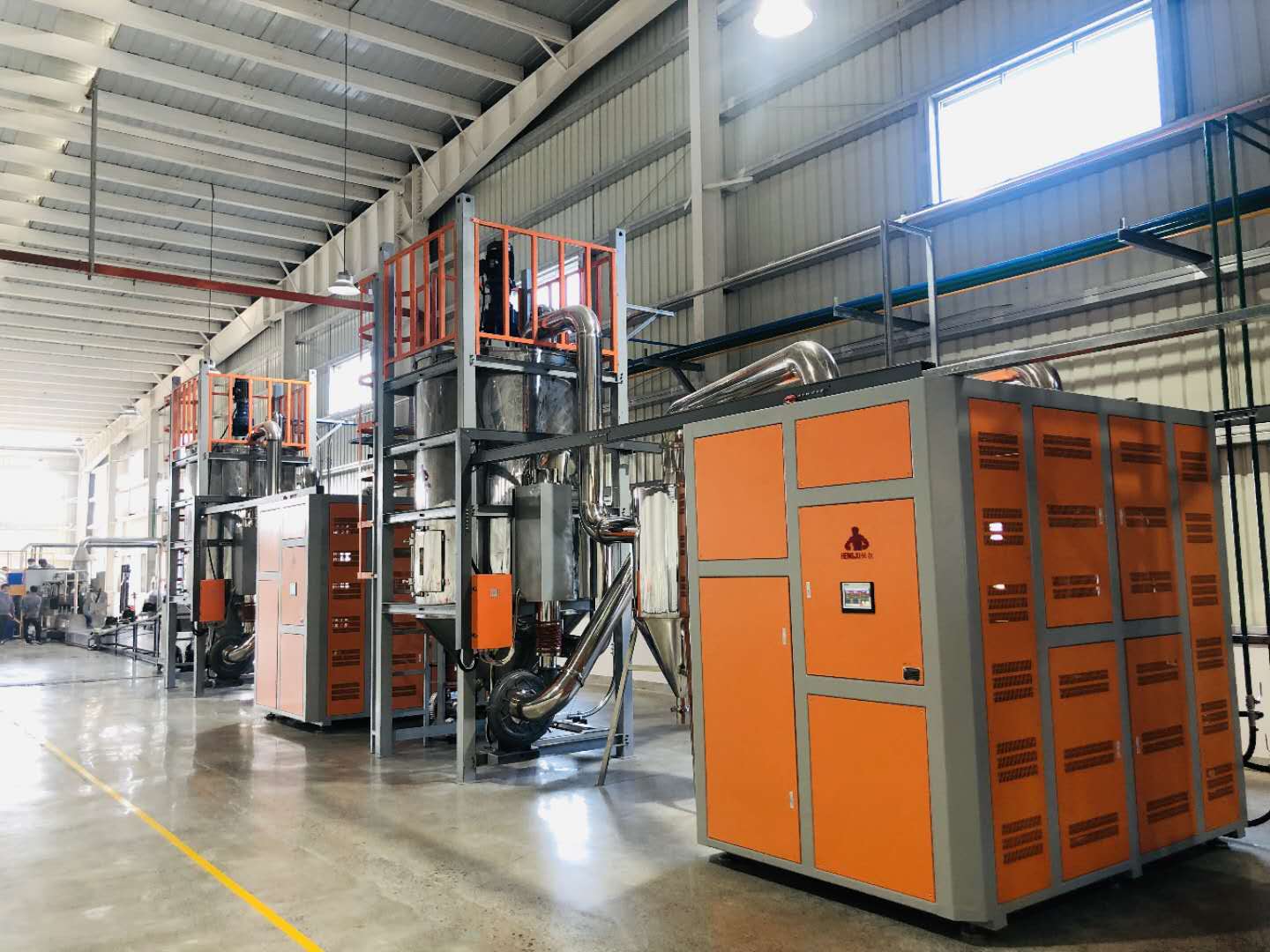The plastic particle dehumidification dryer uses very dry air for dehumidification, so it can shorten the drying time and save labor hours. The plastic particle dehumidifying dryer is mainly used to dry the highly hygroscopic plastics. The dehumidifying dryer sends the dehumidified low dew point air into one or more standard drying hoppers to improve drying efficiency and shorten drying time.
Assuming that the drying time of the material to be dried of the plastic particle desiccant dryer is 4hr, the processing capacity
100lb/h (1lb=0.4536Kg). To determine whether the airflow of the plastic particle desiccant dryer is sufficient, you can measure the temperature curve in the drying silo. Here, pay special attention to the temperature at 4hr (400lb). If the temperature of the 400lb material level in the drying silo of the plastic particle desiccant dryer reaches the set value, then it can be considered that the air flow is sufficient (the desiccant dryer does not use raw materials).
If only the material at 1hr, 2hr or 3hr in the drying silo is fully heated, it means that the air flow cannot complete the heating and drying of the material at the predetermined yield. Insufficient heating may indicate that for the productivity of the plastic particle desiccant dryer, the drying barrel is too small, or the airflow is restricted due to clogged filters or damaged hoses. Excessive air volume can cause problems, which not only wastes energy, but also causes high return air temperature and destroys the performance of the desiccant.

If the material is not properly dried after coming out of the plastic particle desiccant dryer, check whether the drying silo has enough space to provide sufficient and effective drying time. The effective drying time of the plastic particle desiccant dryer refers to the time that the particles are actually exposed to the appropriate drying temperature and dew point. If the particles stay in the desiccant dryer silo for insufficient time, they will not be properly dried.
Therefore, attention should be paid to the size and shape of pellets or crushed materials, as they will affect the bulk density and residence time of the dried materials. The return air filter of the plastic particle desiccant dryer can prevent the filamentous material from polluting the runner and affect its moisture absorption performance. The filter of the plastic particle desiccant dryer must be kept clean to ensure sufficient airflow. In the process of using the desiccant dryer, we must pay attention to the above factors in order to dry the materials better.
|
 +8613669807274
+8613669807274
 +8613669807274
+8613669807274 wto-btb@wto-btb.com
wto-btb@wto-btb.com Tel: +8613669807274
Tel: +8613669807274 SMS: +8613669807274
SMS: +8613669807274